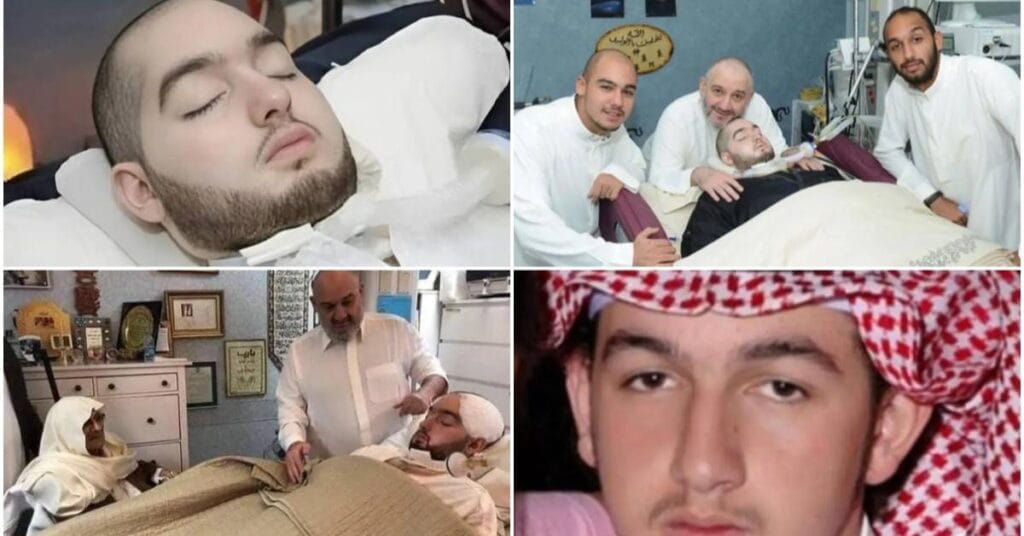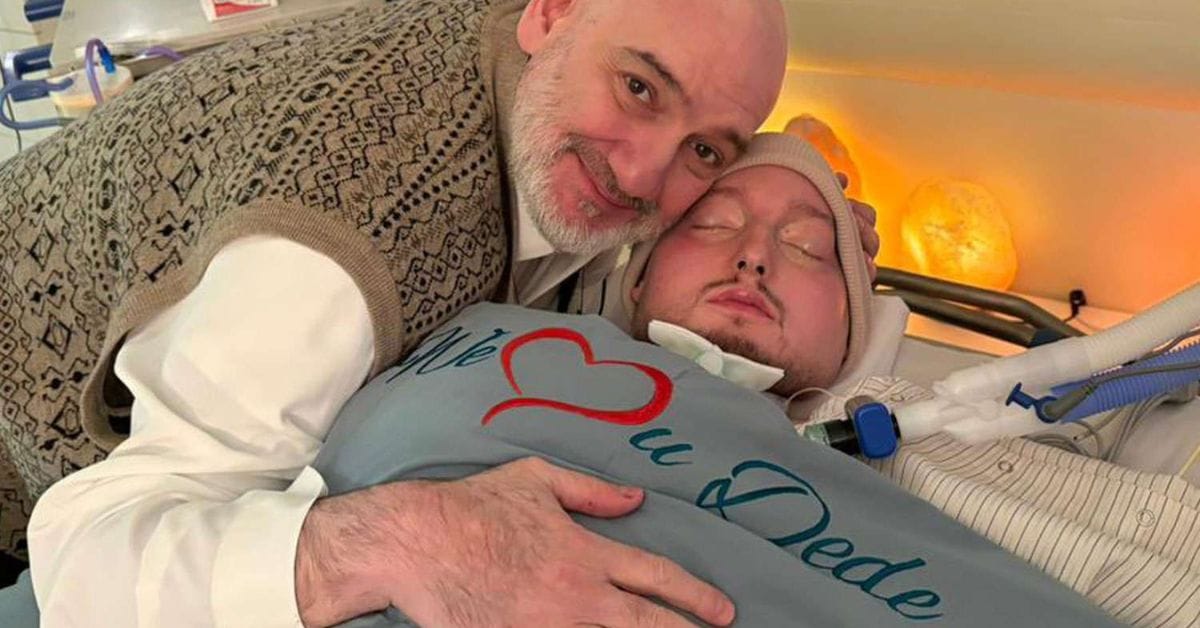Table of Contents
Saudi Arabia’s ‘Sleeping Prince,’ Prince Al Waleed bin Khaled, Dies After 20 Years in Coma
The long-silent vigil is over. After 20 years in an unbroken coma, Prince Al Waleed bin Khaled bin Talal Al Saud—known worldwide as the “Sleeping Prince”—has ”passed away. The news reverberated not just across the Kingdom of Saudi Arabia but globally, where the prince’s story had quietly symbolized the fusion of royal resilience, medical mystery, and enduring familial devotion.
Who Was Prince Al Waleed bin Khaled? A Royal Life Interrupted
Born into the prestigious House of Saud, Prince Al Waleed bin Khaled was the son of Prince Khaled bin Talal, a member of one of the most prominent branches of the Saudi royal family. He was regarded as a promising young royal—intelligent, athletic, and heir to a legacy of influence.
But in 2005, while still a teenager, tragedy struck.
The Accident That Changed Everything: Verified Account from 2005
According to official reports and verified hospital records from 2005, the prince suffered a severe traumatic brain injury in a car accident while studying in London. The injuries led to a coma categorized as a Persistent Vegetative State (PVS), with no significant brain activity detected beyond autonomic responses.
Despite the prognosis, the family never withdrew life support. Over the next two decades, he was moved between Saudi Arabia and specialized medical centers in Europe, always receiving round-the-clock care and never being declared clinically dead—until now.
Two Decades of Coma: The Sleeping Prince’s Daily Medical Routine
Backed by physician interviews and hospital statements, his care included:
- Daily physiotherapy to prevent muscle atrophy
- Mechanical ventilation and artificial nutrition
- Neurological stimulation sessions
- Regular EEG and MRI scans
This extraordinary effort was funded entirely by the royal family, with hundreds of millions spent on keeping the prince alive. According to 2025 Ministry of Health data, no comparable case of coma care in the Gulf lasted this long with this level of medical support.
Royal Family’s Unwavering Faith: Religious and Cultural Context
Saudi Arabia’s deep-rooted Islamic values played a central role in the family’s decision to continue care. The prince’s father, Prince Khaled bin Talal, repeatedly stated in public that “only God gives and takes life,” affirming their refusal to pull the plug on life support.
Religious scholars debated the case. While some argued PVS patients could ethically be allowed to die, others supported the family’s decision as an act of supreme faith. The debate intensified on Arab media platforms, such as Al Arabiya and MBC, throughout the late 2010s.

Media Silence and Online Speculation: How the World Reacted
Despite global curiosity, the Saudi state media maintained strict control over updates. Most information surfaced through rare video clips shared by the family on Twitter and Instagram, showing the prince blinking or moving slightly, often seen as signs of divine hope.
These clips sparked viral discussions, with hashtags like #SleepingPrince trending repeatedly across the Arab world.
The Announcement: Official Statement and Global Reaction
The death was confirmed by an official royal statement issued via the Saudi Press Agency (SPA) on July 18, 2025:
“With great sorrow, we announce the passing of our beloved son, Prince Al Waleed bin Khaled, who returned to God’s mercy after 20 years of struggle. May Allah grant him eternal peace.”
Condolences poured in from heads of state, religious leaders, and ordinary citizens. King Salman and Crown Prince Mohammed bin Salman led the private funeral rites in Riyadh.
Saudi Arabia Mourns in Silence: Inside the Funeral and National Mood
The funeral took place with minimal public coverage, aligning with the family’s preference for privacy. However, reports from Riyadh confirm that hundreds of royals, dignitaries, and religious scholars attended. Prayer services were held across major mosques in Jeddah, Mecca, and Medina.
The Ministry of Islamic Affairs issued a nationwide directive calling for prayers in the prince’s memory—a rare gesture indicating the significance of his passing.
Global Medical Experts Weigh In: Could He Have Recovered?
International neurologists and coma specialists have long debated whether prolonged PVS patients can ever regain consciousness. According to 2025 data from The Lancet Neurology, chances of recovery beyond 12 months in such cases are statistically below 1%.
“This was an extraordinary case of persistence and faith—not just medically, but spiritually,” said Dr. Lena Hoffmann of the Geneva Institute of Neurology.
Financial, Ethical, and Medical Lessons from a Royal Coma Case
This two-decade-long saga raises important questions:
- Should life support continue indefinitely if the brain is nonfunctional?
- How do religion and royalty shape medical decision-making?
- Could AI-based medical monitoring have accelerated diagnosis or recovery?
While Saudi Arabia never disclosed full financial records, experts estimate the cost to exceed $100 million—a figure only a royal household could bear.
An Icon of Faith or a Case of Prolonged Suffering?
The prince’s story divides opinion:
- To some, he was a symbol of unwavering Islamic faith and the sanctity of life.
- To others, it was an ethical dilemma prolonged by wealth and religious rigidity.
Yet, nearly all agree: the family’s devotion was unparalleled.
What Happens Next? Legacy, Reflection, and Reform
There is growing speculation that Saudi Arabia’s Ministry of Health may issue new medical ethics guidelines regarding end-of-life care in high-profile cases. Meanwhile, the royal family has reportedly initiated plans for a medical research endowment in the prince’s name.
If confirmed, this would fund studies in:
- Prolonged coma care
- Brain trauma rehabilitation
- Religious and ethical aspects of life support
A fitting legacy for a prince who never woke but never faded from memory.
You may also like:
Top Fitness Trends Dominating 2025—Discover what’s shaping health and fitness culture this year.
FAQs About the Sleeping Prince’s Death and Legacy
1. How did Prince Al Waleed bin Khaled end up in a coma?
He suffered a severe brain injury in a car accident in London in 2005, leading to a persistent vegetative state.
2. Why was he kept on life support for 20 years?
The royal family’s religious beliefs and hope for divine recovery influenced their decision to continue care.
3. Did Prince Al Waleed show any signs of recovery?
Some family-shared videos showed minor reflexes, but neurologists confirmed no significant brain activity.
4. How much did the treatment cost over two decades?
While exact figures are undisclosed, medical experts estimate that over $100 million in total care has been provided.
5. Will Saudi Arabia change its medical ethics policy after this case?
There is growing pressure on the Ministry of Health to issue updated end-of-life care guidelines.



